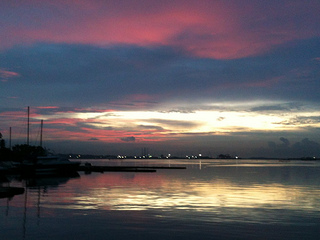 Indonesia’s ongoing construction of a new container port in Tanjung Sauh is part of an ambitious plan to become a major transshipment center, but whether the country can compete directly against Singapore is still to be seen, according to global consultancy Drewry Maritime Research.
Indonesia’s ongoing construction of a new container port in Tanjung Sauh is part of an ambitious plan to become a major transshipment center, but whether the country can compete directly against Singapore is still to be seen, according to global consultancy Drewry Maritime Research.
The decision of Indonesia to build a box terminal that will take on Singapore and Malaysia is surprising. Drewry noted Singapore’s leading position as a global transshipment hub, registering cargo growth of 5.7 percent last year, up to 31.6 million TEUs (20-foot-equivalent units). Nearby Tanjung Pelepas, meanwhile, saw traffic increase by only 2.1 percent, up to 7.7 million TEUs, but this was preceded by a 19.7 percent growth in 2011.
Drewry said, however, that the Indonesian government’s move could bear good fruit. The emerging country’s economy grew by about 6 percent per annum between 2005 and 2012, helping to increase its container traffic from nearly 7 million TEUs to more than 12 million TEUs. Whether it succeeds as an international transshipment center or not, the new port does have another big market to target.
Additionally, the world’s largest archipelago has about 2,000 ports to serve, ranging from wooden jetties to modern terminals, making transshipment essential. Only 18 ports are involved with containerized cargo, and the largest, Tanjung Priok, handled nearly half of the country’s containerized cargo last year.
“However, being off the beaten track, Tanjung Priok attracts few direct services, which is why Tanjung Sauh is viewed so favorably. Singapore is only a stone’s throw away, so has no geographic advantage, added to which Tanjung Sauh also has deep water,” said Drewry.
Another factor in favor of Tanjung Sauh is that Indonesia has almost reached its capacity and needs to upgrade its container-handling infrastructure to maintain growth. Apart from Tanjung Sauh, Indonesia plans to construct several smaller container ports to spread the burden of container stuffing and unstuffing operations. For example, the Kalibaru Port project has also been started by Indonesian Port Corporation (IPC), known as Pelindo II.
Tanjung Sauh, located between the islands of Batam and Bintan, involves an initial investment of US$756 million. The first phase, to be completed by 2015, will have a two-kilometer-long wharf. A further 4.5 kilometers of wharf is expected to be built later on. The location already has good draught and so requires no dredging. The port will be connected to Batam via a bridge. There are several other hard and soft infrastructural plans to support the functioning of the proposed port.
On average, 50 million TEUs pass through the Strait of Malacca in a year, so only a small market share is targeted.
However, Indonesia’s track record does not bode well, said Drewry. It noted the nation’s delays and abortions of past port projects, protection of state-owned interests, and silence on the issue of extending financial help to Tanjung Sauh so it can compete against Singapore’s tariff charges.
Also, Indonesian ports “are not renowned for efficiency, so shipping lines will need to be persuaded that poor port performance in other Indonesian ports will not be replicated at the new hub terminal,” said Drewry.
Though not too positive about the prospects of the Tanjung Sauh port, Drewry nonetheless said that, if the Indonesian government means what it says, “the port can become a major transshipment center for the main east-west trades, as well as being a more efficient hub for the rest of the Indonesian archipelago.”
Photo: jermyn-toh




